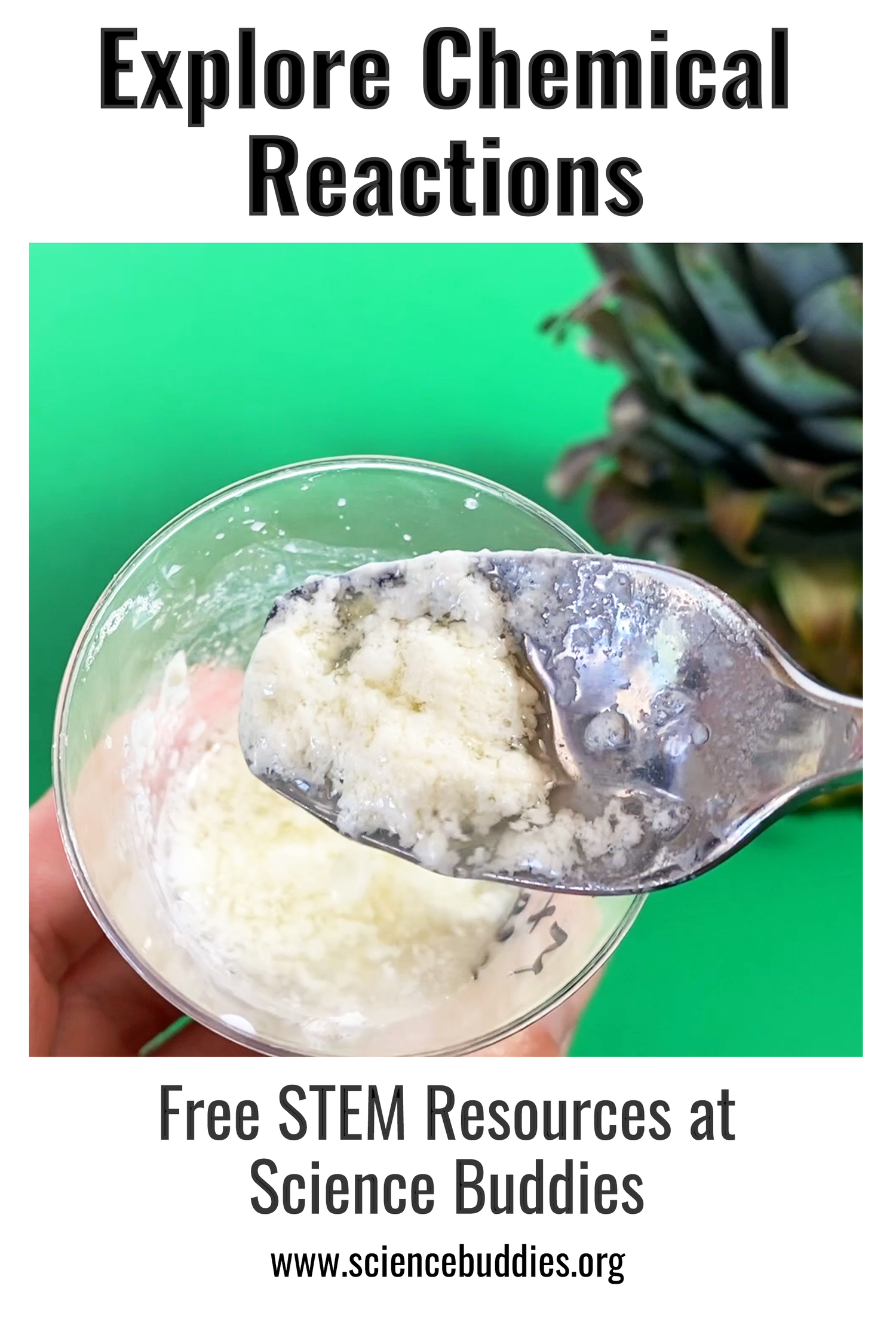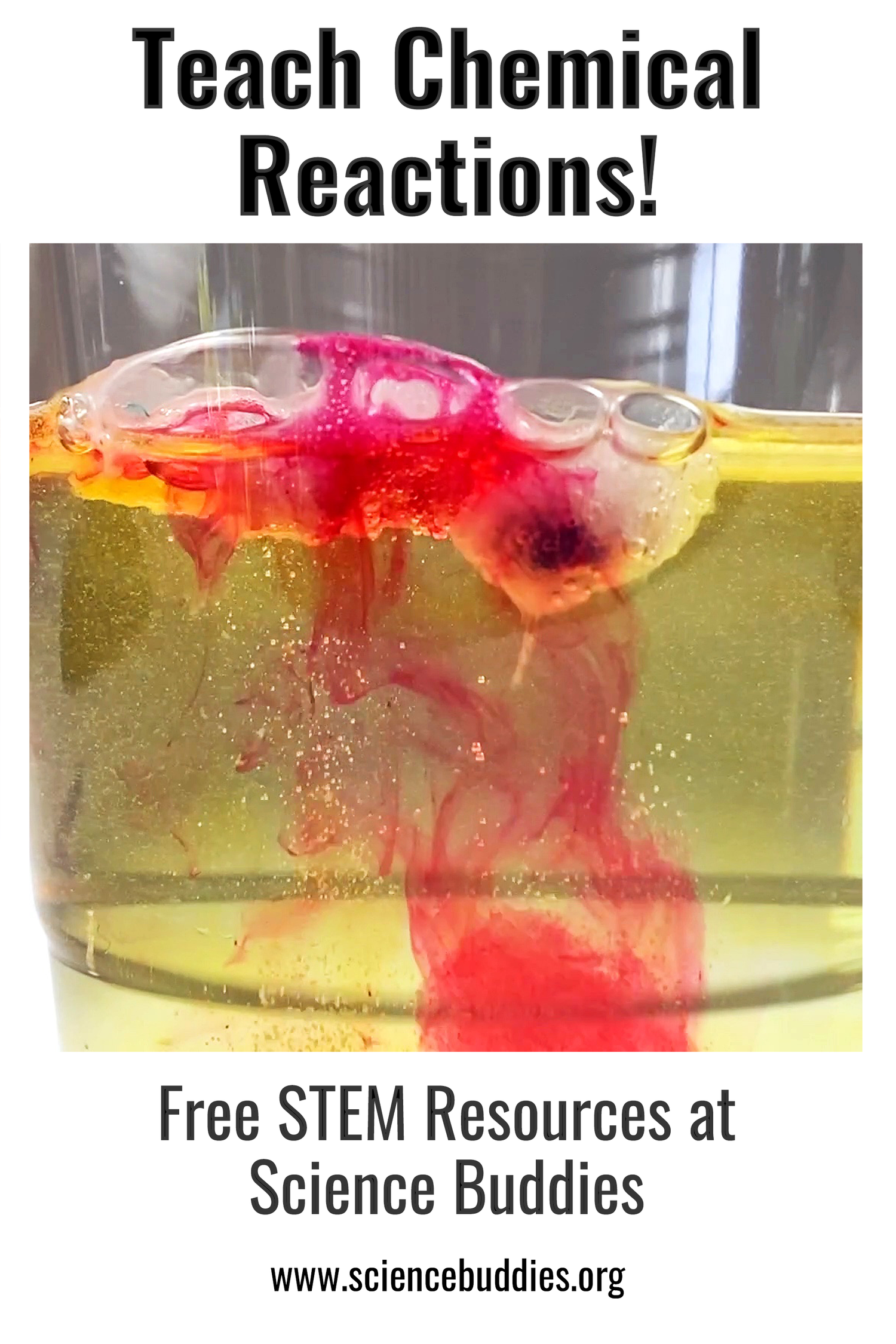Teach Chemical Reactions - 20+ Chemistry Lessons and Activities
Use these free chemistry lesson plans, experiments, and activities to teach and explore chemical reactions with K-12 students.
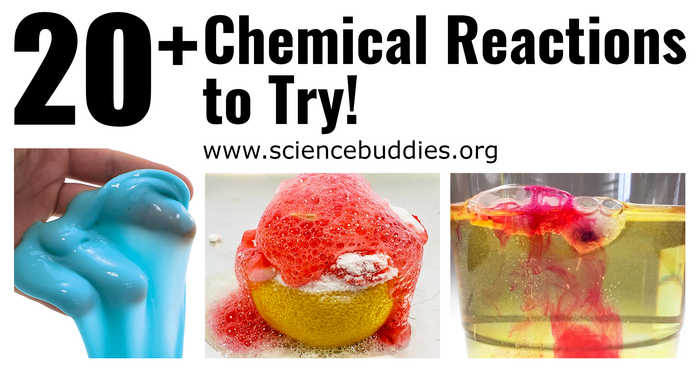
A chemical reaction occurs when two or more substances (reactants) are mixed together and result in one or more new substances (products). When teaching about chemical reactions, educators show chemical reactions in action and, when possible, let students get hands-on exploring reactions. With classroom science experiments, activities, and independent student projects, students can learn about types of chemical reactions, including composition (also called synthesis or combination), decomposition, single replacement, double replacement, and combustion, and ways that the rate of a reaction can be sped up or slowed down. Students also learn that the law of conservation of mass applies to all reactions and means that every atom of reactant can be accounted for as either product or waste when the reaction is complete.
Lessons, activities, and science demonstrations below include a range of foaming, fizzing, color-changing, and transforming experiments for teaching a unit on chemical reactions. Resources are available in the following formats:
At the bottom of this resource, you will find a list of key vocabulary words and additional related resources for teaching chemistry. For students looking for science projects, we have also included a list of independent science and science fair projects.
Note: for more information about these "types" of Science Buddies resources, see Understanding Science Buddies' Resources at the bottom of this resource.
Video Lessons to Explore Chemical Reactions
1. How are New Materials Invented? (Grade 5)
In the How are New Materials Invented? video lesson, students investigate how materials are made and the role chemical reactions play. Students learn to identify different properties of materials and then experiment with making their own slime using a basic recipe. They then make additional batches of slime with different properties. To create slime with specific properties, students use the engineering design process and also observe chemical reactions that occur as they use different materials and recipes.
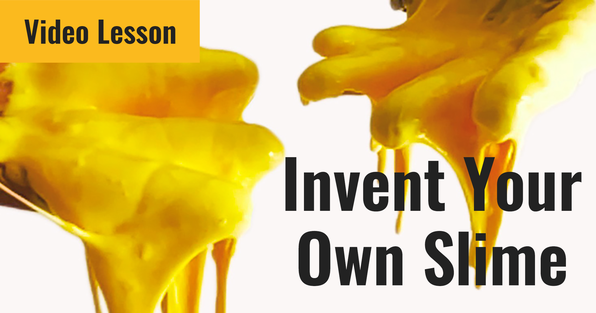
2. What is Plastic Made From? (Grades 6-8)
In the Chemical Reactions: What is Plastic Made From? video lesson, students explore the process of making plastic and the role a chemical reaction plays in the material properties of a plastic. Students learn about polymerization as they transform milk and vinegar into a casein polymer. As a result of the experiment, they observe how the reactants in a chemical reaction differ from the substance created.
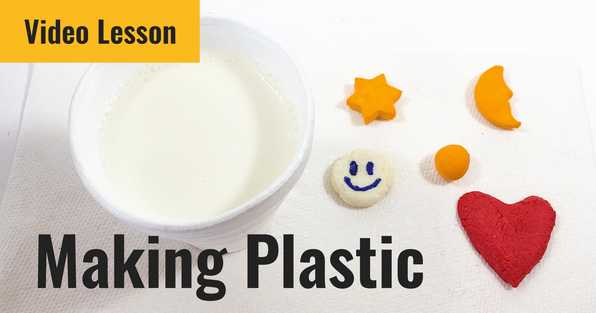
Lesson Plans to Explore Chemical Reactions
Lesson Plans contain materials to support educators leading hands-on STEM learning with students. Lesson Plans offer NGSS alignment, contain background materials to inspire confidence in teachers even in areas that may be new to them, and include supplemental resources like worksheets, videos, discussion questions, and assessment materials. (In some cases, we have both an activity and a lesson plan available on a similar topic. Lesson Plans offer additional support for educators, but we've noted activity versions, too.)
1. Design Slime (Grades 3-5)
In the Slime Shop: Engineer Your Own Slime lesson, students use the engineering design process to design their own slime. (Activity version also available.)
2. Pineapple + Milk Curdles (Grade 5)
In the What Do Enzymes in Pineapple Juice Do to Milk? lesson, students learn about enzymes as they combine pineapple and milk and observe what happens and why. (Activity version also available.)
3. Cold Pack Chemistry (Grades 6-8)
In the Cold Pack Chemistry: Exploring Endothermic and Exothermic Reactions lesson, students investigate endothermic and exothermic reactions and choose the best chemical reaction for designing their own cold pack.
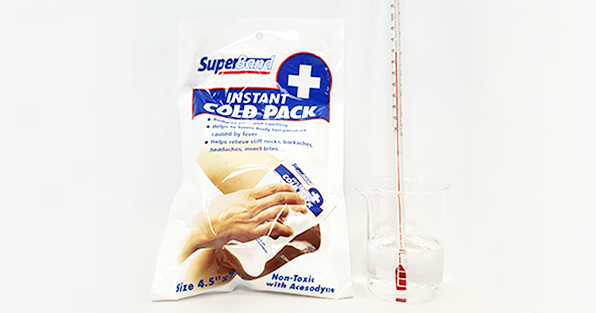
4. Milk Plastic (Grades 6-8)
In the Turn Milk into Plastic! lesson, students use the chemical reaction between milk and vinegar to create casein milk plastic and learn about polymerization. (Activity version also available.)
5. Design a Delayed-Release Tablet (Grades 6-8)
In the Design a Delayed-Release Tablet materials science lesson, students explore how medicines are formulated and how pills dissolve. They are then challenged to design and build a controlled-release tablet made from different colored bath tablets and a variety of water-soluble plastics that will release in three different timed stages, which will be visibly indicated by color.
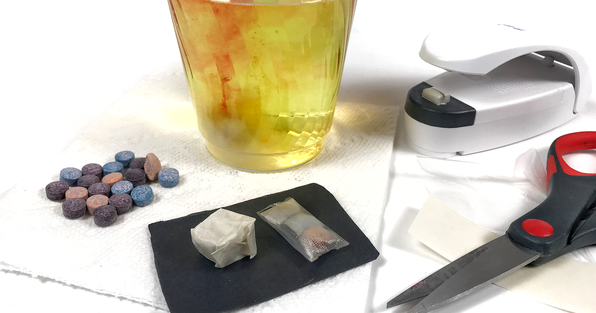
6. Environmental Impact Factor for Chemical Reactions (Grades 6-12)
In the E-factor: Environmental Impact Factor for Chemical Reactions green chemistry lesson, students do a hands-on activity with M&Ms to investigate environmental impact factor (E-factor). They explore how it applies to chemical processes and how waste from chemical reactions can be reduced by applying the principles of green chemistry. (For related resources, see the Green Chemistry and the School Science Lab - Safer Chemistry for Today and Tomorrow collection.)
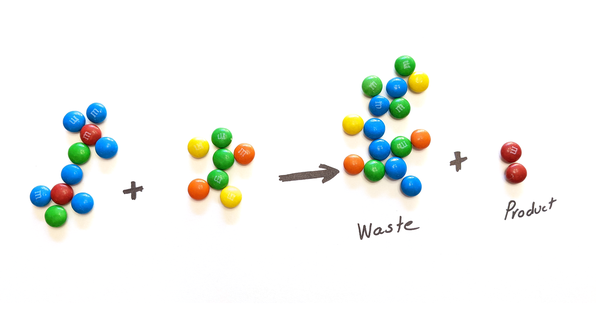
7. Types of Chemical Reactions (Grades 9-12)
In the Using Green Chemistry to Understand Types of Chemical Reactions lesson, students learn about different reaction types, including composition, decomposition, single-displacement, and double-displacement reactions. Using the 12 Principles of Green Chemistry as a guide, they are then challenged to identify reaction types and choose which reactions they will create.
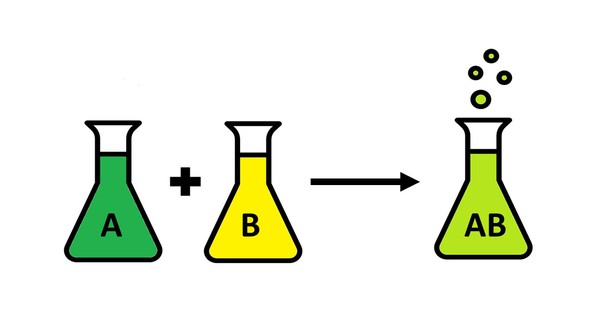
8. Catalase, Substrate, and Reaction Rate (Grades 9-12)
In the Control the Reaction Rate of a Foaming Reaction lesson, students explore the role of the substrate in controlling the rate of a reaction.
9. Reaction Rates & Temperature (Grades 9-12)
In the Reaction Rates: Speed It Up with Temperature! lesson, students investigate a color-changing reaction between food coloring and bleach. How does temperature affect the rate of the reaction?
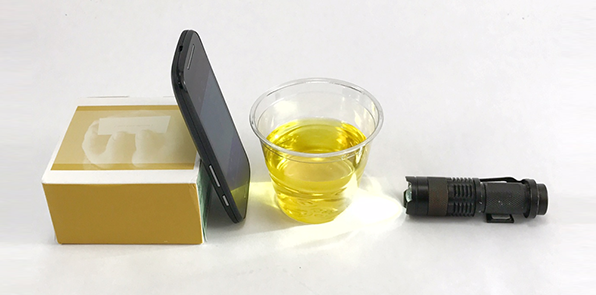
10. Reaction Rates & Surface Area (Grades 9-12)
In the Reaction Rates: When Surface Area Matters! lesson, students use Alka-Seltzer® tablets crushed into different sizes to investigate the relationship between surface area and reaction rate.
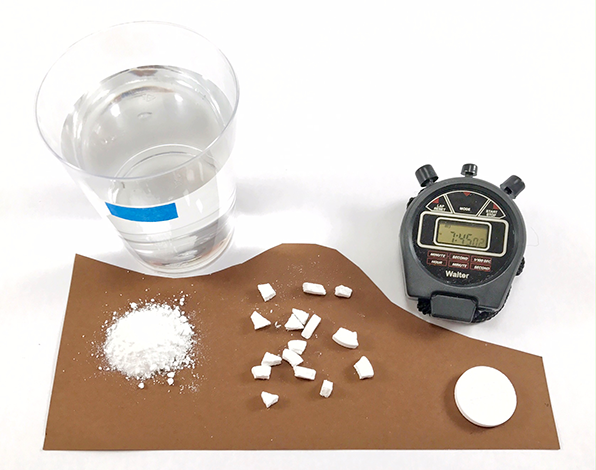
Activities to Explore Chemical Reactions
1. Elephant Toothpaste
There is no actual toothpaste involved, but the Elephant Toothpaste reaction creates a fun, high-impact foaming demonstration of the reaction created when hydrogen peroxide is mixed with yeast and dish soap. (Optional: students can use various colors of food dye to create their own unique displays.)
2. Chemical Reaction Lava Lamp
In the Make an Alka-Seltzer Powered Lava Lamp activity, students can enjoy a groovy, bubbling lava lamp effect when they combine Alka-Seltzer®, mineral or vegetable oil, and water.
3. Lemon Volcano
In the Make a Lemon Volcano activity, students make their own fizzing volcanoes when they mix baking soda and lemon (citric acid) and see what the release of carbon dioxide (CO2) gas has to do with the volcano effect.
4. Invisible Ink
Have turmeric? In the Secret Messages With Invisible Ink! activity, students explore two different kinds of chemical reactions to see which works best for writing and decoding secret messages. (Tip! Get a firsthand look at how things went when this family did the activity at home.)
5. Bath Bombs
In the Making Homemade Bath Bombs activity, students explore different recipes and ingredients to see which will produce the fizziest bath bomb — and why. (A convenient Bath Bomb Kit is available for students doing science projects about this chemical reaction.)
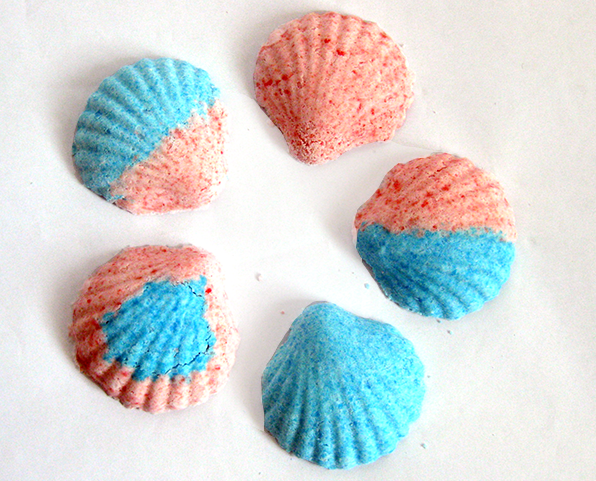
6. Exploring Enzymes
In the Exploring Enzymes activity, students learn about enzymes in the body and find out how the catalase enzyme helps protect cells.
7. Fire Snake
In the Make a Fire Snake activity, the combination of lighter fluid, sand, baking soda, and sugar triggers a chemical reaction in which an impressive fire snake seems to magically grow as it burns.
8. Cabbage Chemistry
In the Color-changing Cabbage Chemistry activity, students use cabbage to make an indicator solution and then learn about acids and bases by testing various foods and liquids.
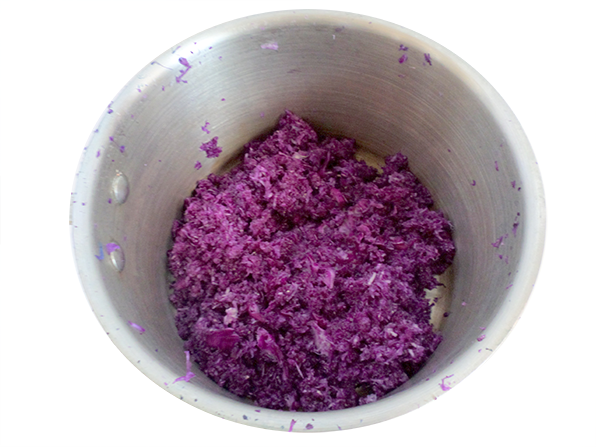
9. Foamy Fake Snow
In the Foaming Fake Snow activity, students make fake snow and explore chemical reactions and surfactants.
Chemistry Projects about Chemical Reactions for Students Doing Independent Science Projects or Science Fair
Students interested in projects involving chemical reactions may enjoy independent science projects like these:
(Projects listed in order of difficulty.)
- Liver Stinks!
- Big Pieces or Small Pieces: Which React Faster?
- Crime Scene Chemistry: Determine the Identity of an Unknown Chemical Substance
- Plop, Plop, Fizz Fast: The Effect of Temperature on Reaction Time
- What's the Best Container for Elephant Toothpaste?
- Can You Change the Rate of a Chemical Reaction by Changing the Particle Size of the Reactants?
- How Fast Does an Alka-Seltzer® Tablet Make Gas?
- Enzyme-Catalyzed Reactions— What Affects Their Rates?
- Solar-powered Chemistry: Study Chemical Reaction Rates in Ultraviolet Beads
- Presto! From Black to Clear with the Magic of Photochemistry
- Delayed Release Pill Challenge: Getting Medicine to the Right Place at the Right Time
- Minds of Their Own: A Chemical Reaction that Changes, then Changes Back!
- Investigate the Kinetics of the Color Changing Iodine Clock Reaction
- Crime Scene Chemistry—The Cool Blue Light of Luminol
Vocabulary
The following word bank contains words that may be covered when teaching about chemical reactions using the lessons and activities in this resource.
- Autocatalytic
- Briggs-Rauscher (BR) reaction
- Catalysis
- Catalyst
- Chemical equation
- Chemical reaction equation
- Coefficient
- Combination
- Composition
- Combustion
- Concentration
- Decomposition
- Endothermic
- Enzyme
- Exothermic
- Double replacement
- Green chemistry
- Kinetics
- Law of conservation of mass
- Oscillate
- Oscillating reaction
- Oxidation reduction (redox)
- Photochemical reaction
- Polymerization
- Product
- Radical process
- Rate
- Reagent
- Reactant
- Reaction
- Replacement
- Single replacement
- Steady state
- Stoichiometry
- Substrate
- Synthesis
- Temperature
- Transformation
Explore More
Learn more about types of chemical reactions from our partners at ChemTalk.
See also, the following chemistry resource collections:
- 13 Lessons to Teach About the Chemistry of Mixtures and Solutions
- Green Chemistry and the School Science Lab - Safer Chemistry for Today and Tomorrow
- 5 Fizzing, Foaming, and Bubbling Science Projects!
Thematic Collections
Collections like this help educators find themed activities in a specific subject area or discover activities and lessons that meet a curriculum need. We hope these collections make it convenient for teachers to browse related lessons and activities. For other collections, see the Teaching Science Units and Thematic Collections lists. We encourage you to browse the complete STEM Activities for Kids and Lesson Plans areas, too. Filters are available to help you narrow your search.
Understanding Science Buddies' STEM Resources
Lesson Plans contain materials to support educators leading hands-on STEM learning with students. Lesson Plans offer NGSS alignment, contain background materials to boost teacher confidence, even in areas that may be new to them, and include supplemental resources like worksheets, videos, discussion questions, and assessment materials.
Video Lessons include NGSS alignment and offer a plug-and-play option for teaching a STEM lesson. Each Video Lesson asks a science question, teaches students about the relevant science, and guides students in a hands-on experiment that will help them answer the question. Video Lessons are NGSS-aligned and bring core science concepts to life with storytelling, animation, and photos using a self-paced engage, explore, and reflect format.
Activities are simplified explorations that can be used in the classroom or in informal learning environments.
Projects are written to support students doing independent science projects or science fair projects. Projects can be adapted for classroom use.
Categories:
You Might Also Enjoy These Related Posts:
- Teach Genetics and Heredity with Free STEM Lessons & Activities - Genetics Science Projects
- Star Wars Projects for May the 4th Be With You Science
- 25+ Earth Day Science Experiments and Activities
- Arduino Science Projects and Physical Computing
- Spring Science Projects: 26 Science Experiments for Spring
- 25+ Robotics Projects, Lessons, and Activities
- March Madness Basketball Science Projects: Sports Science Experiments
- 15 Density Science Experiments













